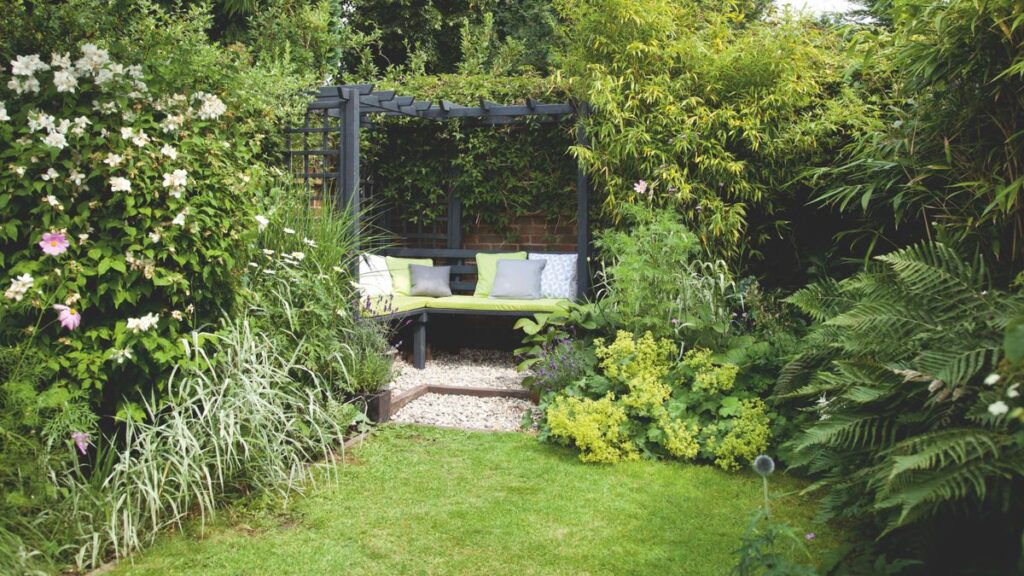Baby, it’s cold outside – but that’s exactly why you need to learn how to prune shrubs in February like a pro.
When it comes to what to prune in February, shrubs are top of the list. This is because you usually need it chilly if you’re pruning; colder climes usually mean that most of your best shrubs will be dormant, making it an ideal time for cutting back as they’re less susceptible to disease and hungry pests.
That being said, there are a few things to bear in mind if you’re planning on getting the secateurs out this month.
‘Now is the perfect time to prune many shrubs to promote healthy new growth and more flowers and fruit,’ says Morris Hankinson, director of Hopes Grove Nurseries.
‘It is important not to prune too late because doing so will impact new growth and mean you’ll have to wait until next winter to prune,’ he continues.
How to prune shrubs in February
Before you start pruning you need to make sure you’re equipped with everything you need. ‘You definitely want to use the right tools,’ Andrew O’Donoghue, one of the directors of Gardens Revived.
‘Think secateurs for small branches, loppers for thicker ones, and a pruning saw for large cuts,’ he continues.
‘Keep them clean and sharp, to make sure you don’t accidentally inflict any hidden damage to your prized shrubs.’
What you will need
Felco FEL2 Model 2 Original Secateurs
Cosy Gardener Sage Gardening Gloves
GroundMaster 90L Garden Waste Bags
Once you have these tools to hand (it’s also be worth investing in these AIRAJ Telescopic Loppers from Amazon if your bushes are particularly tall), you can get started on the following steps…
1. Choose the right day
If you want to prune your shrubs in February, be sure to pay special attention to the weather forecast; it can make all the difference to the results.
‘Take care to prune on a day when it is not freezing or pouring with rain to avoid frost damage to shrubs with pruning cuts,’ says Morris.
2. Prune back dead, diseased, or damaged material
Start by pruning shrubs that flower during the summer or later such as forsythia.
‘Using sharp tools, begin by removing any dead, diseased or damaged material and any crossing branches or stems that impact the shape of the shrub,’ says Morris,
3. Remove overgrown stems
Morris says you should take care to ‘remove overgrown stems to give the shrub the shape you are looking for by curling just above a side shoot or bud’.
‘This will be enough to tidy and shape the shrub for the seasons ahead,’ he adds.
4. Switch things up, depending on the shrub
If you’re working with something like a buddleja, you don’t have to be so careful; in fact, Morris says you can cut back hard by up to a half.
‘This is needed for strong new growth and to stop them growing tall with only flowers at the top, plus they can get quite unruly! When the weather gets warmer, they will soon regrow,’ he promises.
5. Show them some love
Once you’ve pruned your shrubs, Andrew says it’s important to show them a little TLC to help with their recovery.
‘Take care to water and mulch them,’ he advises, ‘and be sure to monitor for stress.’
The shrubs to prune in February
It’s not just a matter of knowing how to prune shrubs in February; it’s every bit as important to know which shrubs to prune in February, too.
‘The key is knowing which shrub you have and pruning according to the type,’ says Morris.
As such, it’s best to focus on the following…
1. Winter flowering shrubs (after flowering)
You can cut back winter flowering shrubs as soon as they’ve finished flowering. For example…
- Mahonia
- Winter-flowering jasmine
- Witch hazel
2. Summer flowering deciduous shrubs
You should prune summer-flowering deciduous shrubs between February and March (particularly those that flower on the current year’s growth).
‘Spring-flowering shrubs like forsythia should be pruned after flowering, while summer bloomers like buddleia and lavatera are best cut back in late winter or early spring,’ advises Andrew O’Donoghue of Gardens Revived.
These include…
- Buddleia (Butterfly bush)
- Lavatera (Tree mallow)
- Hydrangea paniculata/hydrangea arborescens
3. Shrubs that flower on new wood
If you have a garden filled with shrubs that flower on new wood – such as hardy fuchsia or cornus (dogwood) – take care to cut them back only once risk of hard frost passes.
For some parts of the UK, this might be February. For others, it may well be March or April.
4. Roses
That’s right; February to March is the best time to prune most types of roses, including shrub roses, as this is the time when they are waking up from dormancy.
FAQs
Can you trim hedges in February in the UK?
The Woodland Trust recommends that you trim shrubs and hedges between October and February, as you may disturb nesting birds from March to September.
‘Some shrubs need specific techniques,’ adds Andrew O’Donoghue of Gardens Revived.
‘Hydrangeas should be pruned in spring to strong buds, buddleia benefits from a hard cut in March, lavender should be trimmed after flowering without cutting old wood, and roses need pruning in late winter.’
Now that you know how to prune shrubs in February, you can set to work getting your garden ship-shape ahead of the spring and summer sunshine.
Happy snipping…
Read the full article here
